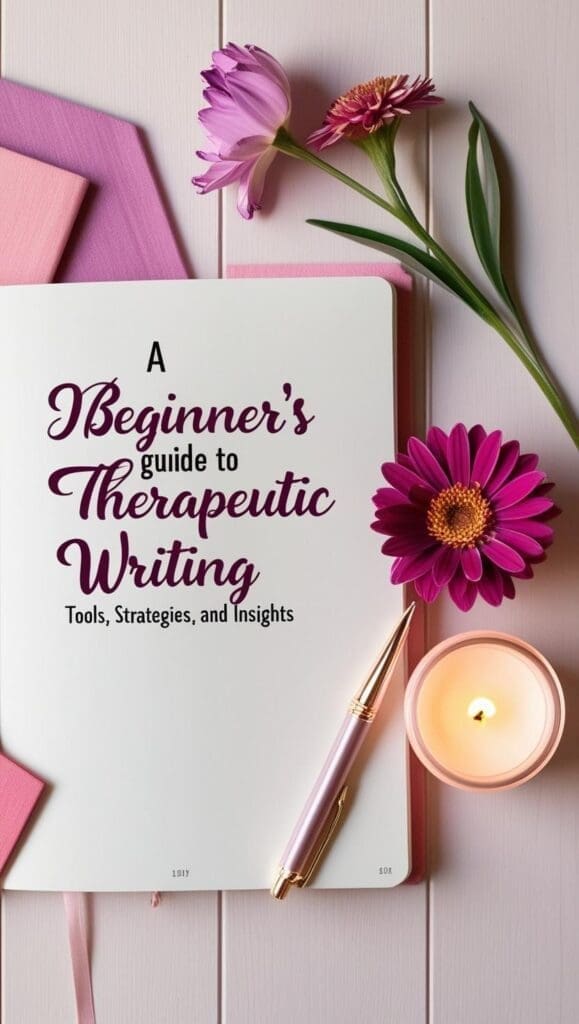Therapeutic writing, also known as expressive writing, is a powerful tool for self-discovery and emotional healing. It helps you process thoughts, release pent-up emotions, and gain clarity on life’s challenges. But before diving in, it’s essential to equip yourself with the right tools, strategies, and knowledge to make the experience meaningful and effective.
Why Start Therapeutic Writing?
Therapeutic writing can:
- Help you process emotions and past experiences.
- Clarify your thoughts and intentions.
- Boost mental well-being by reducing stress and anxiety.
- Enhance self-awareness and personal growth.
What You Need to Get Started
Here’s a checklist of the essentials to kick off your therapeutic writing journey:
1. Tools of the Trade
- A Dedicated Notebook or Journal: Choose one that feels inviting. A sturdy hardcover journal or a sleek spiral-bound notebook can work well. If aesthetics motivate you, opt for something visually pleasing.
- Writing Utensils: A reliable pen is essential. Consider gel pens, fine-tip markers, or even colorful pens if you want to add some creativity.
- Digital Alternatives: If you prefer typing, apps like Evernote, Penzu, or even a simple Google Doc can be excellent.
- Timer (Optional): A timer can help you set boundaries for writing sessions (e.g., 10-20 minutes).
2. A Comfortable Space
Create an environment conducive to reflection and creativity:
- Choose a quiet spot free from distractions.
- Have good lighting and a comfortable seat.
- Consider adding calming elements like candles, soft music, or an inspiring view.
3. A Clear Intention
Before starting, decide on your goal for therapeutic writing. Are you:
- Processing a specific event?
- Exploring a recurring emotion?
- Simply releasing thoughts without judgment? Having a clear intention can help guide your writing and make it more purposeful.

Strategies for Effective Therapeutic Writing
1. Start With Prompts
Prompts can help overcome the intimidation of a blank page. Some examples include:
- “What’s weighing on my mind today?”
- “Describe a memory that has shaped me.”
- “What does self-compassion mean to me?”
- “What am I grateful for right now?”
2. Write Freely and Without Judgment
Don’t worry about grammar, spelling, or structure. The goal is to express yourself authentically. Allow the words to flow naturally.
3. Set a Time Limit
Start small, with 10-15 minute sessions, especially if you’re new to this practice. You can gradually extend the time as you become more comfortable.
4. Incorporate Reflection
After writing, take a moment to read over what you’ve written (if it feels safe to do so). Highlight key insights or patterns. Reflection deepens the process and fosters understanding.
5. Be Consistent
Make therapeutic writing a habit. Whether it’s daily, weekly, or when you’re in need, consistency helps build a stronger connection with your thoughts and emotions.
Knowledge to Empower Your Practice
1. Understand Its Purpose
Therapeutic writing is not about crafting a masterpiece or producing something to share. It’s a private space for you to process and heal.
2. Recognize Emotional Triggers
Writing can bring up intense emotions, especially when exploring deep wounds or difficult memories. Be prepared for this and know it’s okay to pause or seek support if needed.
3. Know When to Seek Professional Help
Therapeutic writing can complement professional therapy but may not replace it. If your writing uncovers overwhelming feelings, consider reaching out to a counselor or therapist for guidance.
4. Educate Yourself on Writing Techniques
Learn about specific writing exercises such as:
- Letter Writing: Write a letter to someone (shared or unsent) to process emotions.
- Dialogue Journaling: Have a written conversation with a part of yourself, like your inner critic.
- Gratitude Lists: Note things you’re grateful for to shift your perspective.
Bonus Tips for Success
- Use Visuals: Add doodles, drawings, or even attach photos to enrich your entries.
- Mix It Up: Alternate between prose, poetry, and bullet points to keep things fresh.
- Track Your Progress: Review older entries to see how far you’ve come.
Final Thoughts
Therapeutic writing is a journey, not a destination. It’s okay to have messy pages, emotional outbursts, or days when words don’t come easily. What matters is showing up for yourself with honesty and compassion. With the right tools and strategies, you’ll find this practice to be a rewarding addition to your self-care routine.

About the Author
Hi, I’m Eve, a former school counselor with a master’s degree in School Psychology and a passionate advocate for children and families navigating sensory challenges. As a mom of children with sensory sensitivities, I deeply understand the journey special-needs parents face, and I dedicate myself to researching and sharing practical solutions to help children thrive and feel comfortable in their bodies. My goal is also to empower counselors, therapists, and psychologists with creative strategies and supportive resources to enrich their everyday practice. When I’m not writing or exploring new therapeutic approaches, you’ll find me spending quality time with my family and continually seeking inspiration from everyday moments.


